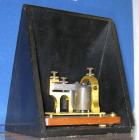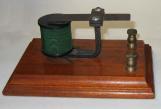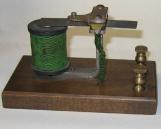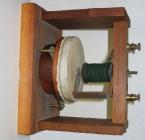1
Distant communications were rather slow affairs till the mid 19th century, since messages, letters and the like had to be carried by runner, stagecoach, train and or ship. A message to Europe and back could take weeks and months if to other continents.Telegraph was first used by Claude Chappe in the late 18th century for his optical system that used a network of towers which were surmounted by two flexible arms that could be positioned in multiple ways to transmit coded messages. However, the main drawback of his system was it could only work when one tower was visible to the next, at night or in storms the system was inoperative.
4
Samuel Morse is credited with the invention of the first practical electrical telegraph system in 1844. Although, in 1837, Englishmen Cooke and Wheatstone already had an operational telegraph based on multiple needles, it wasn't as successful, because Morse's system used a simple code to represent letters and numbers. Electrical telegraphy revolutionized communications specially when undersea cables were successfully installed, where it took weeks or months became practically instantaneous.5
Telegraph Cable - UnderseaCirca 1882
North Atlantic - Valentia Island Ireland
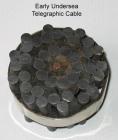 Credits:
Credits:Donald Beauprie
Mark Steadman, Porthcurno Telegraph Museum, Penzance, UK
7
Montreal Fire Alarm Centre1900 - 1930
Montréal, Québec, Canada
 Credits:
Credits:Northern News - March 22, 1971
8
It didn't take long for other applications based on the telegraph to appear such as the fire alarm, the first one was installed in Boston, Mass. in 1852 and the stock exchange ticker tape in 1867.Soon with the popularity of telegraph more and more messages were being sent down the wire and exceeded the capacity of a wire, the solution was to string up more wire or invent a system to carry more messages simultaneously on a single wire.
9
Alexander Graham Bell1840 - 1920
Brantford, Ontario, Canada
 Credits:
Credits:Bell Canada Historical Collection
10
Enter Alexander Graham Bell, he was born in 1847 to Eliza Symonds and Alexander Melville Bell in Scotland. He spent time with his grandfather who was an elocutionist, afterwards he taught elocution. His father developed a system called visible speech as an aid to teach deaf people speech. In 1868 A.G. Bell teaches speech to the deaf.After losing two of his three sons his father and his family emigrate to Canada. They arrive in Québec city,on August 1st 1870, on the "Canadian Mail Steamship Nestorian". The family settles in Tutela Heights area in Brantford, Ontario. Melville Bell's fame followed him to Canada, he had received so many calls to lecture in Canada he wasn't able to fulfill his long promised engagement to the "School for the Deaf" in Boston. So in 1871 he sent his son Alexander in his place who subsequently opens his own school of vocal physiology and is attracted to the solution of telegraph transmission congestion. A Boston ear specialist and Bell team up to understand the operation of the human ear, they experiment with a device that could trace sound vibrations.
Bell was so busy with his teaching it did not leave him time for his experiments. He decided to return to his parents home in Brantford for his vacations so he might study the problems of sound waves and lay plans for the future.
13
Bell in the summer of 1874 while at his parents home in Brantford, conceives the idea of the telephone. By early 1875 he teams up with Thomas Watson to experiment in electrical apparatus in order to increase the number of telegraphic messages sent along a wire. He called his device harmonic telegraph, because he believed if he could send different tones down a wire, these would operate distinct devices that would only respond to their specific tone.One day Watson while attempting to free the reed of his transmitting device upon letting it go it caused the receiving device, located in another room to which it was electrically connected, to vibrate. Bell upon hearing this vibration thought this could be used to transmit the voice.

